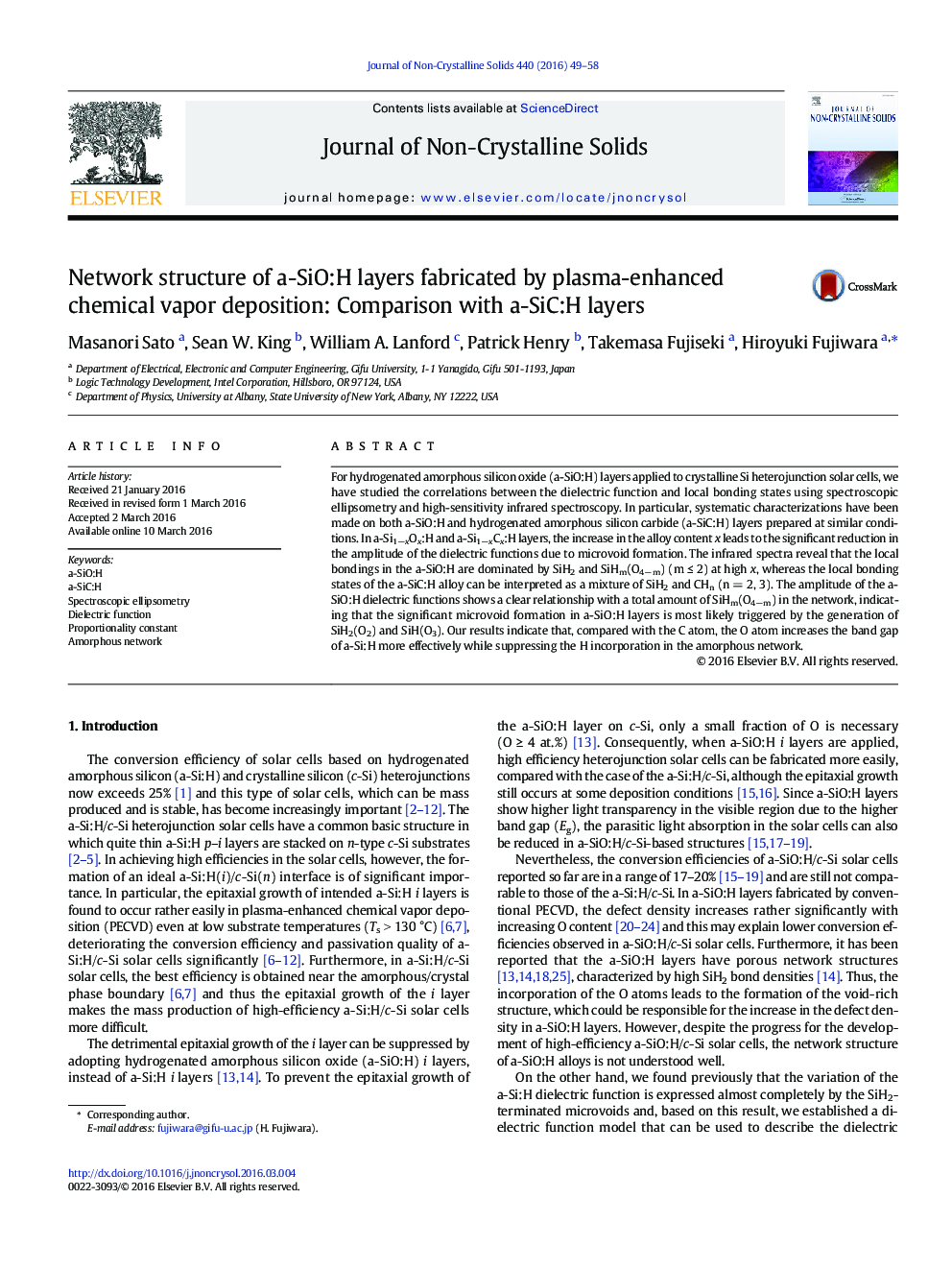| Article ID | Journal | Published Year | Pages | File Type |
|---|---|---|---|---|
| 1480245 | Journal of Non-Crystalline Solids | 2016 | 10 Pages |
•The correlations between optical properties and local bondings in a-SiO:H are found.•The microscopic network structure of a-SiO:H is revealed for the first time.•Void formation in a-SiO:H is proposed to occur by unreactive SiH2(O2) and SiH(O3).•We find that a-SiO:H has more rigid amorphous network, compared with a-SiC:H.
For hydrogenated amorphous silicon oxide (a-SiO:H) layers applied to crystalline Si heterojunction solar cells, we have studied the correlations between the dielectric function and local bonding states using spectroscopic ellipsometry and high-sensitivity infrared spectroscopy. In particular, systematic characterizations have been made on both a-SiO:H and hydrogenated amorphous silicon carbide (a-SiC:H) layers prepared at similar conditions. In a-Si1−xOx:H and a-Si1−xCx:H layers, the increase in the alloy content x leads to the significant reduction in the amplitude of the dielectric functions due to microvoid formation. The infrared spectra reveal that the local bondings in the a-SiO:H are dominated by SiH2 and SiHm(O4−m) (m ≤ 2) at high x, whereas the local bonding states of the a-SiC:H alloy can be interpreted as a mixture of SiH2 and CHn (n = 2, 3). The amplitude of the a-SiO:H dielectric functions shows a clear relationship with a total amount of SiHm(O4−m) in the network, indicating that the significant microvoid formation in a-SiO:H layers is most likely triggered by the generation of SiH2(O2) and SiH(O3). Our results indicate that, compared with the C atom, the O atom increases the band gap of a-Si:H more effectively while suppressing the H incorporation in the amorphous network.
